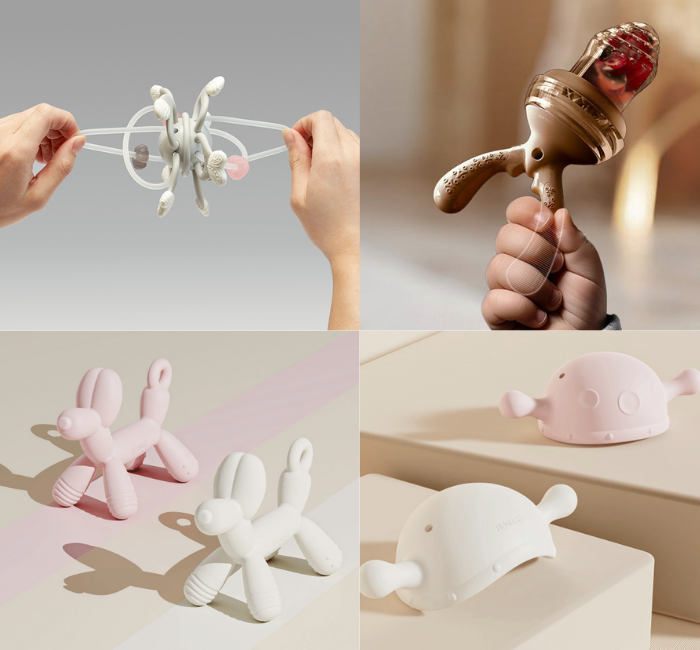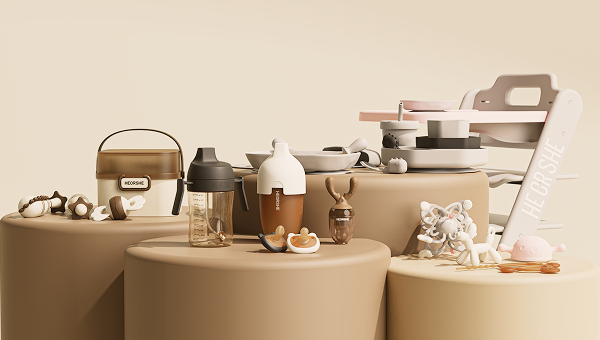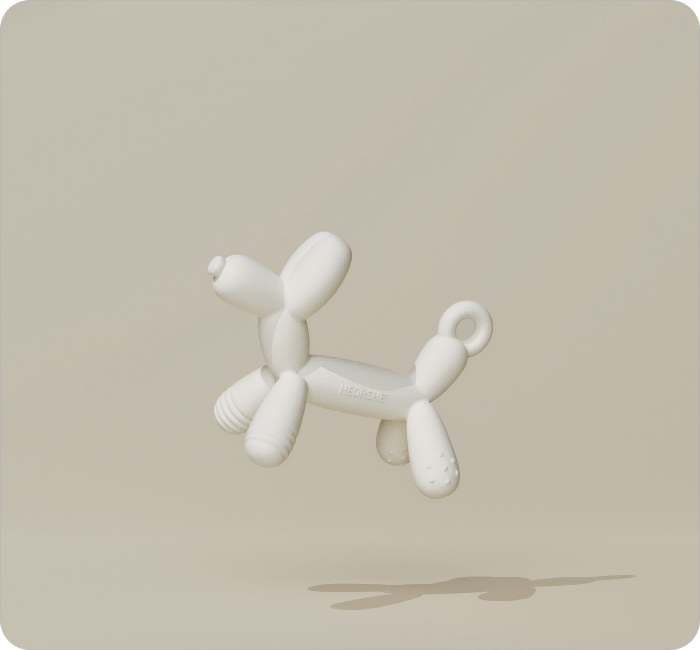At six months old, babies are curious and ready to explore the world around them. This stage is marked by the development of essential skills such as hand-eye coordination, motor skills, and sensory awareness. Infant toys play a crucial role in supporting these developmental milestones, serving as tools for learning and exploration. The market offers a vast array of options, making the selection of the right toys overwhelming for parents and caregivers. It’s important to choose toys that not only entertain but also stimulate and engage babies, helping them to practice and enhance their newly acquired skills. This article will guide you through the best toys for your six-month-old, focusing on their developmental needs and ensuring they have a fun, engaging experience. From colorful and textured toys that encourage sensory exploration to those that promote fine motor skills, we’ll help you make informed decisions for your child’s growth and enjoyment.
How We Chose the Best Toys for 6-Month-Olds
Selecting the best toys for a 6-month-old requires careful consideration of safety, developmental benefits, and the baby’s interest. We based our choices on several important criteria to ensure the toys we recommend will be both safe and beneficial for your baby’s growth and enjoyment.
- Safety: The primary concern is ensuring that toys are safe for babies. This means they must be free from small parts that could pose a choking hazard and must be made from non-toxic, BPA-free materials. All toys should meet or exceed established safety standards for infants. We carefully reviewed each toy’s construction and materials to ensure they can withstand the vigorous play of curious infants while remaining safe.
- Developmental Benefits: At six months, babies experience rapid development in motor skills, sensory awareness, and cognitive abilities. Our selection includes toys designed to enhance these developmental milestones. For instance, toys that promote grasping help improve fine motor skills, while teething toys provide relief for sore gums and encourage oral exploration. Sensory toys with varied textures, colors, and sounds help stimulate cognitive growth by engaging multiple senses.
- Engagement: Keeping a baby’s attention is crucial, and we focused on toys that are visually and tactilely stimulating. Bright colors, diverse textures, and engaging sounds are essential features of the toys we selected. These elements not only attract a baby’s attention but also encourage them to explore and interact, fostering curiosity and learning.
Our selection of toys caters to various developmental stages and interests, ensuring a well-rounded play experience. From soothing teethers for relieving discomfort to interactive toys that encourage problem-solving and sensory play, we provide a diverse range of options to support your baby’s development. By considering these comprehensive criteria, we aim to provide you with the best tools to nurture your 6-month-old’s growth, ensuring that playtime is both enjoyable and educational.
11 best toys for 6 month old
1. Stacking Toys
Stacking toys are fantastic tools for developing a range of essential skills in young children. They provide an interactive way for babies to work on their hand-eye coordination as they grasp, lift, and place each piece on top of another. This seemingly simple action requires precision and control, fostering the development of fine motor skills and coordination.
Beyond motor skills, stacking toys introduce foundational concepts such as size, shape, and color recognition. As babies play, they begin to understand the differences between each piece, learning to identify and sort them based on their attributes. This process helps develop cognitive skills, including problem-solving and spatial awareness, as children figure out how to stack the pieces in the correct order or fit them together.
Furthermore, stacking toys can spark creativity and imagination. Children can use the pieces in various ways, building towers, creating patterns, or even using them as props in imaginative play. This versatility encourages them to experiment and explore, providing endless opportunities for learning and fun. Overall, stacking toys offer a rich, engaging experience that supports multiple areas of a child’s development, making them a valuable addition to any playtime routine.
2. Tummy Time Toys
Tummy time is a vital activity for infants, as it helps strengthen their neck, shoulder, and upper body muscles, which are essential for developing motor skills like rolling over, crawling, and eventually walking. Tummy time toys are designed to make this activity more engaging and enjoyable, encouraging babies to reach, push, and lift their heads, thereby enhancing their physical development.
Toys placed within a baby’s line of sight can motivate them to lift their head and chest to get a better look, helping to build the strength in their neck and shoulder muscles. Brightly colored toys with different textures and sounds can attract a baby’s attention, encouraging them to reach out and grasp, which improves hand-eye coordination and fine motor skills.
Interactive toys, such as those with mirrors, rattles, or crinkle features, can further stimulate a baby’s senses and keep them engaged during tummy time. Some tummy time toys are designed to roll or move, prompting babies to push and crawl towards them, which supports their gross motor skill development.
Incorporating a variety of tummy time toys into a baby’s play routine can provide a fun and effective way to support their overall physical development while also introducing them to new sensory experiences.
3. Teething Toys
Teething Toys are designed to provide relief to babies and young children during the teething phase. They are often made from soft, chewable materials like silicone or rubber and may have various textures to soothe sore gums. Teething toys can come in many shapes and sizes, often designed to be easy for small hands to grip.
- Teether Ball: This type of teething toy is shaped like a ball, often with protrusions or textures on its surface to provide different sensations for a teething baby. The round shape makes it easy for babies to hold and explore with their mouths, and the texture helps massage the gums.
- Puppy Teether: Specifically designed for puppies, these teething toys help soothe their gums during the teething process, which typically occurs between three and six months of age. Puppy teethers are usually made of durable materials that can withstand sharp puppy teeth and come in a variety of shapes and textures.
- Galaxy Teether: A galaxy teether is a type of baby teething toy that features a space or celestial theme, often decorated with stars, planets, and other cosmic designs. This can add a fun and visually stimulating aspect to the teether, while still providing the necessary gum relief for the baby. These teethers are also typically made from safe, chewable materials.
4. Grasping Toys
Grasping toys are essential for helping babies develop their fine motor skills, which are crucial for performing everyday tasks as they grow. These toys are specifically designed to be easy for little hands to hold, allowing babies to practice their grip and hand movements.
Toys like grab balls are ideal because their shape and size are perfect for tiny fingers to explore. As babies grip, shake, and manipulate these toys, they enhance their hand-eye coordination and build the strength and dexterity needed for more complex movements. These activities also lay the groundwork for skills like holding utensils, writing, and buttoning clothes in the future.
Grasping toys often come with various textures, colors, and even sounds, adding a sensory component to the play experience. This sensory stimulation keeps babies engaged and encourages them to explore the toys with their hands and mouths, providing a holistic developmental experience.
Grasping toys offer a fun and effective way to support a baby’s fine motor development while also stimulating their senses and curiosity.
5. Stuffed Toys
Soft and cuddly, stuffed toys play a significant role in a baby's comfort and emotional development. These toys provide a sense of security and can become a baby’s first friend, offering companionship and comfort, especially during bedtime or in new environments. The tactile sensation of hugging or holding a stuffed toy can be soothing, helping to calm and reassure babies in moments of stress or anxiety.
Beyond comfort, stuffed toys can also support a child’s emotional development by fostering feelings of empathy and nurturing. As babies grow, they often engage in pretend play with their stuffed animals, acting out scenarios and caring for their toys. This type of play allows children to explore emotions, develop social skills, and understand relationships.
Additionally, stuffed toys can aid in the development of language and cognitive skills. As parents and caregivers interact with the child and their stuffed toy, they often create stories or dialogues, enriching the child’s vocabulary and understanding of the world around them.
Stuffed toys are not just playthings; they are essential companions that support a child’s emotional well-being and contribute to their overall development.
6. Learning Cubes
Learning cubes are interactive toys designed to introduce babies to various textures, sounds, and visual stimuli, making them excellent tools for aiding cognitive development. Each side of a learning cube often features different activities, such as buttons to press, levers to pull, or wheels to spin. These interactive elements encourage babies to explore and manipulate the toy, promoting problem-solving skills and hand-eye coordination.
The diverse textures on learning cubes engage a baby’s sense of touch, helping them learn to differentiate between various surfaces. This tactile exploration is crucial for developing fine motor skills and dexterity. Additionally, the sounds produced by some learning cubes, such as rattles, squeakers, or musical elements, help stimulate auditory development and encourage auditory recognition.
Visual stimulation is another key feature of learning cubes, with bright colors, patterns, and pictures designed to attract a baby’s attention and enhance their visual tracking skills. As babies interact with these cubes, they also begin to understand cause-and-effect relationships, learning that their actions can produce different outcomes.
Learning cubes provide a comprehensive sensory experience that supports a baby’s cognitive and physical development while keeping them engaged and entertained.
7. Sensory Toys
Sensory toys are designed to engage multiple senses simultaneously, providing babies with a rich environment to explore and understand their surroundings. These toys are typically equipped with a variety of textures, colors, and sounds, all of which stimulate a baby’s developing senses and encourage exploration.
The different textures found on sensory toys help babies develop their tactile perception, allowing them to distinguish between various surfaces and materials. This tactile stimulation is crucial for developing fine motor skills and hand-eye coordination, as babies learn to manipulate and explore the toys with their hands.
Bright colors and patterns on sensory toys capture a baby’s attention and help improve visual tracking and focus. By reaching for and interacting with these colorful toys, babies also practice their grasping skills, further enhancing their fine motor development.
The auditory elements of sensory toys, such as rattles, bells, or crinkling sounds, stimulate a baby’s hearing and encourage auditory recognition. These sounds can also help teach cause and effect, as babies learn that their actions can produce different noises.
Sensory toys provide a comprehensive sensory experience that supports cognitive and physical development, making them a valuable addition to any baby’s playtime routine.
8. Mirror Toys
Babies are naturally fascinated by their reflections, making mirror toys a delightful and engaging tool for their development. These toys promote self-awareness as babies begin to recognize themselves in the mirror, a crucial step in their cognitive and emotional development. Observing their own facial expressions and movements can be both entertaining and educational, helping them develop a sense of identity and understanding of their own bodies.
Mirror toys are also excellent additions to tummy time activities. Placing a mirror toy in front of a baby during tummy time encourages them to lift their head and push up with their arms to get a better view of their reflection. This action strengthens their neck and shoulder muscles, supporting the development of motor skills necessary for crawling and other movements.
Furthermore, mirror toys often come with additional features, such as lights, sounds, or attached toys, that can further stimulate a baby’s senses and encourage exploration. These added elements can enhance the overall play experience, making mirror toys a versatile and valuable addition to a baby’s playtime routine.
9. Peek-a-Boo Toys
Peek-a-boo toys are fantastic tools for developing a baby’s understanding of object permanence, which is the concept that objects continue to exist even when they are not visible. Playing peek-a-boo with these toys helps teach babies that things can disappear and reappear, enhancing their cognitive development.
These toys often feature elements that can be hidden and revealed, such as flaps, doors, or pop-up characters. When babies interact with these features, they learn to anticipate the reappearance of the hidden object, which is a fundamental aspect of developing memory and understanding their environment.
Peek-a-boo toys also provide a fun way to engage with babies, encouraging social interaction and bonding. The surprise element of the game often elicits laughter and excitement, making it an enjoyable experience for both the baby and the caregiver. This interactive play supports emotional development by helping babies learn to express and manage their emotions in response to the unexpected.
Peek-a-boo toys offer a playful and educational experience that supports a baby’s cognitive and emotional growth, making them a valuable addition to their toy collection.
10. Busy Box
Busy boxes are versatile toys that provide a wide range of activities to keep babies engaged and entertained. These toys are designed with various features such as different textures, buttons to press, flaps to lift, knobs to turn, and wheels to spin, offering a comprehensive sensory and motor skills workout.
The diverse elements of a busy box encourage babies to explore and interact, fostering the development of fine motor skills as they grasp, push, pull, and manipulate the different components. This hands-on play helps improve hand-eye coordination and dexterity, essential skills for more complex tasks as they grow.
Additionally, busy boxes often incorporate vibrant colors, patterns, and sometimes even sounds or lights, stimulating a baby's visual and auditory senses. The combination of these sensory inputs keeps babies curious and focused, promoting cognitive development and problem-solving skills as they figure out how to operate each part of the toy.
Busy boxes are also excellent for encouraging independent play, allowing babies to engage with the toy at their own pace and according to their interests. This autonomy in play can boost their confidence and creativity as they discover new ways to interact with the toy.
Busy boxes provide a rich, engaging play experience that supports a baby’s physical, cognitive, and sensory development, making them a fantastic addition to any playroom.
11. Exercise Center
Exercise centers, often referred to as activity or play centers, provide a safe and stimulating environment for babies to practice a variety of movements, significantly contributing to their gross motor development. These centers are designed with multiple activities and features that encourage babies to sit, stand, bounce, and rotate, all within a secure and stable structure.
The primary benefit of an exercise center is that it allows babies to strengthen their core, leg, and arm muscles as they engage in different activities. Whether it’s reaching for hanging toys, pressing buttons, or bouncing up and down, these movements help babies develop the strength and coordination needed for milestones like crawling, standing, and eventually walking.
In addition to physical development, exercise centers also offer sensory and cognitive stimulation. Many centers include a variety of textures, colors, and sounds to explore, keeping babies engaged and entertained. This sensory input helps develop their visual and auditory senses and encourages cognitive skills such as problem-solving and spatial awareness.
Furthermore, exercise centers provide a safe space for independent play. Babies can explore and learn at their own pace, building confidence and promoting self-reliance. The diverse activities available in an exercise center can adapt to a baby’s growing interests and abilities, ensuring continued engagement and learning.
Exercise centers are a valuable tool for supporting a baby’s physical, sensory, and cognitive development, providing a fun and enriching environment for growth and exploration.
HEORSHE Baby Toys
HEORSHE baby toys offer a delightful range of teething options designed to soothe and engage little ones, including the Galaxy Teether, Antler Feeder, Puppy Teether, and The Explorer Teether. The Galaxy Teether features a celestial design with textured surfaces that provide comfort during teething while sparking imagination. The Antler Feeder doubles as a teething toy and a feeding tool, allowing babies to explore flavors safely. The Puppy Teether, with its adorable shape, is perfect for tiny hands to grip while providing relief from sore gums. Lastly, The Explorer Teether encourages sensory play with its varied textures and vibrant colors, promoting motor skills and curiosity. Together, these innovative toys ensure that teething is a fun and comforting experience for babies.

HEORSHE Baby Toys
Conclusion
Choosing the right toy for a 6-month-old involves more than selecting something colorful or visually appealing. It’s about finding a toy that aligns with their developmental needs, providing support, stimulation, and comfort throughout their growth journey. The toys highlighted here are carefully chosen to aid in various aspects of a baby’s development, including teething, fine and gross motor skills, and sensory exploration. Each toy offers unique benefits, from soothing sore gums with teething toys to enhancing cognitive skills with sensory and peek-a-boo toys.
Investing in these toys not only ensures that your baby has the best tools for a happy and healthy start but also enriches their daily experiences with fun and engaging activities. As they explore, play, and learn, they are building a strong foundation for future milestones. By selecting toys that are safe, developmentally appropriate, and enjoyable, you are supporting your baby’s overall well-being and helping them thrive during this critical stage of their growth.




